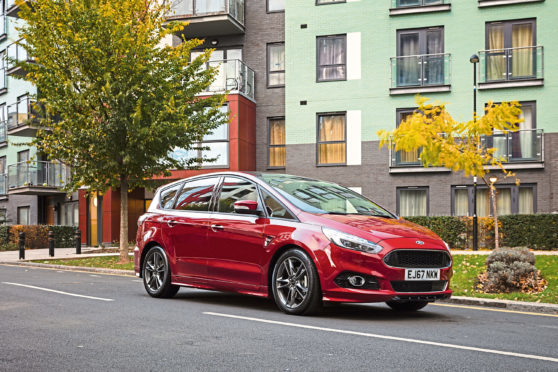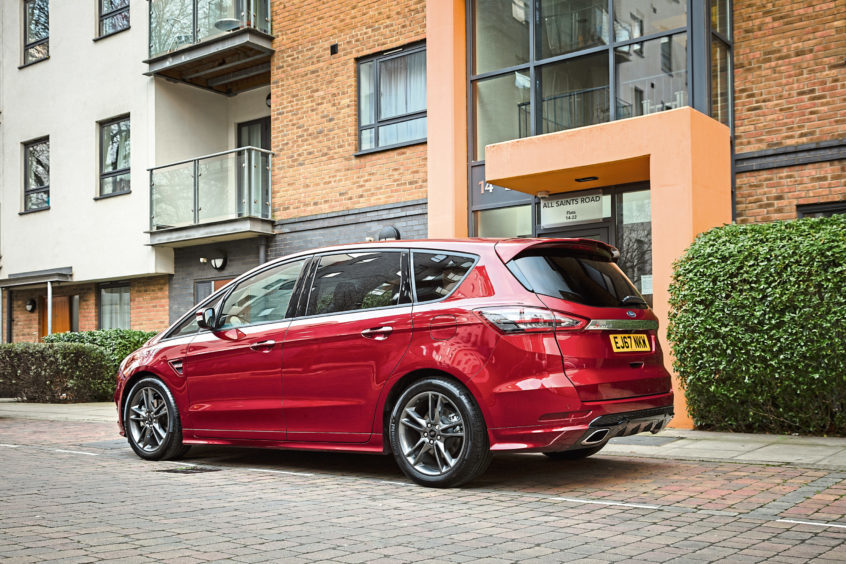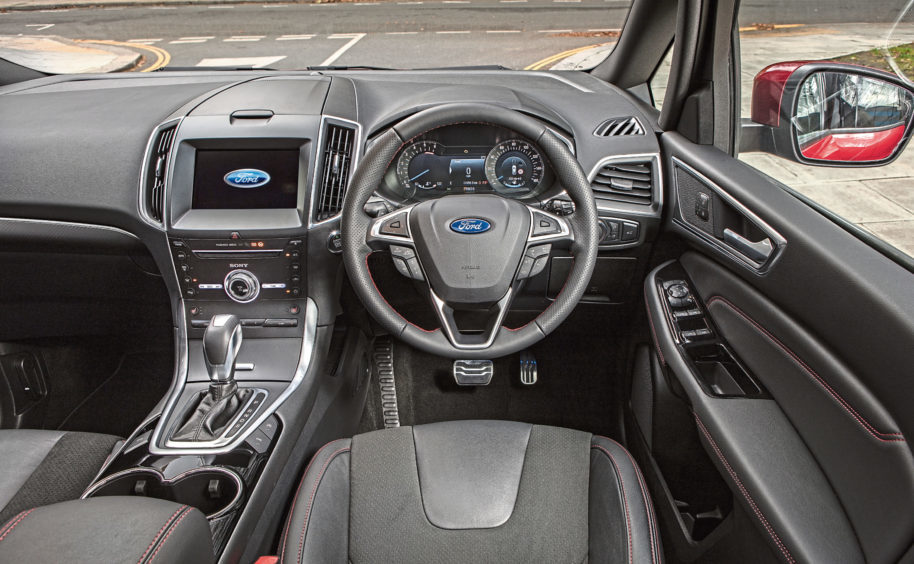It’s finally happened. A week has come when I don’t have to write about an SUV.
Such has become the car buying public’s appetite for faux 4x4s it feels I rarely drive anything else.
So it’s nice to learn that the SUV hasn’t killed off the MPV. This is the S-Max, Ford’s attempt to prove there’s life in the family car yet.
With seven seats, a large boot and prices starting around £27,000, it’s hard to find a better value big car.
I drove the 2.0 litre petrol model in swish ST Line trim, which sits just below the luxury Vignale version of the S-Max.
It takes design cues from Ford’s ST hot hatches, although without the high running costs and expensive insurance quotes that are the flipside of choosing a powerful engine.
There’s a sporty body kit with smart alloys and red stitching on the seats, steering wheel and centre console.
The S-Max has been around for well over a decade now and people carriers have seen their popularity wane as SUVs took over.
People aren’t nearly as keen on this kind of car anymore, which is a shame as they still have a lot to offer.
The S-Max’s trump card is its driving dynamics. A car as big as this should not be so much fun to drive.
In common with all Fords, the clutch, gearbox and steering are all perfectly weighted. Despite the car’s size and heft, it feels nimble through corners and grips more like a hot hatch than a people carrier.
It’s not the absolute roomiest people carrier – Seat’s Alhambra pips it for practicality, as does the larger Ford Galaxy – but its seven seats can comfortably carry five adults and two children.
Even with all seven seats in play there’s still a 275 litre boot. Plenty of cubby holes and storage bins provide additional space to store gear.
It’s great that the S-Max is so much fun to drive but few owners are going to use it to hurl round bends.
So it’s a good thing it’s also a very comfortable long distance cruiser. Wind, road and tyre noise are all kept well in check–the only thing you’ll hear on a long drive is the sound of the kids asking if you’re nearly there yet.
The 2.0 litre turbocharged petrol model I drove mustered 237bhp, but the penalty for that is you’ll struggle to get even close to 40mpg. I’d recommend the 1.5 petrol or one of the diesel options.
I was surprised at how much I enjoyed the S-Max. If you want a family car that’s also fun to drive I recommend giving it a test drive.
Price:
£33,945
0-62mph:
8.4 seconds
Top speed:
140mph
Economy:
35.8mpg
CO2 emissions:
180g/km


